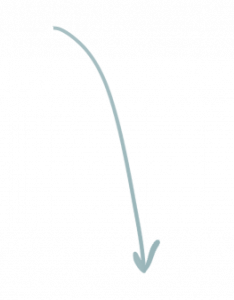When I was a kid, lice prevention was a huge thing at my school. Like, we received a whole sheet of paper on how to prevent them the first day every year, from kindergarten to sixth grade. It was a big deal.
I mean, it worked – I’ve never had lice. In fact, there were only a handful of cases in my seven years there. So clearly, the handout was effective.
As we head back to school in-person, though, lice prevention is not a top worry, of course. But it’s such an unfortunate thing, and it can only add to the stress parents (and kids, when they’re old enough to understand) have regarding in-person learning again.
If your school doesn’t give handouts like mine did, you might need a refresher on how to prevent lice. Here’s your cheat sheet!

What Are Lice, How Do They Spread, And How Can You Treat Them?
Lice are parasites that use mini claws to attach to your head. They then use their mouths to drink your blood, causing an itchy scalp. They tend to stick to warmer areas, so you’ll start seeing them on the back of the neck and near your ears.
Lice go through cycles. Female lice lay six eggs a day, called nits. Nits then hatch after a week, turning into nymphs. After a week, they turn into lice, and the cycle continues. Lice can live up to 30 days on a person’s head, though without blood, they’ll die off within one to two days.
It’s a common misconception that lice are the result of bad hygiene. Ultimately, though, lice are spread through contact. Touching heads, sharing pillows and linens, and sharing hair accessories – like hair ties, pins, and scarves – are what spread lice from one person to another.
Lice treatment is either over the counter or prescribed. There are three steps to treating lice: one, killing the current lice; two, killing nits; and three, disinfecting everything that the lice could potentially be on.
Shampoos are generally the most common treatment, specifically pediculicide shampoo. Formulas that are less intense can be bought OTC, while more intense formulas must be prescribed.
There are also non-FDA-approved natural remedies that can help, including tea tree oil, rosemary oil, and lavender oil. There are plenty of shampoos on the market that contain these ingredients and may help.
Now that you know the deets, here’s how you can prevent lice and completely avoid the problem.
Don’t allow head-to-head contact.
View this post on Instagram
One of the easiest ways for lice to spread is by direct contact. If your child is younger, teach them to avoid touching their heads during playtime, and teach your middle- and high-schoolers not to pose for selfies with close contact.
Don’t share anything you use on your head.
Combs? Nope. Hair ties? Nope. Hats? Biiiig nope. If your child’s friend has lice, they will end up on whatever has touched their hair. Always give your child whatever they’ll need for the day, so they don’t need to borrow anything hair-related, and tell them not to loan out their hair supplies as well.
If your child has long hair, have them wear it up.
This will limit exposure because their hair won’t be as easy to come into contact with. Braids and buns are ideal — ponytails still allow for hair to fly around and have a higher risk of contact. Use hair clips to pull back any wispies or bangs.
Wash and vacuum after friends come over.
You never know if a friend of your child’s has lice at the time, and even indirect contact can cause cross-contamination. Wash whatever the infected person has touched, sat, or lay down on at the highest temperature (130°F or above), then dry on high as well. You can also dry clean if machine washing isn’t an option. Vacuuming spaces that can’t be washed is important, too, in case lice or nits have fallen off their heads.
Put tea tree oil in all shampoos.
While this method is up for debate, some research has found that tea tree oil is good for lice prevention, as it can kill both nits and adult lice. Research also suggests that it can reduce egg hatching. There is also an abundance of shampoos that claim to prevent lice, but read reviews before you purchase.
If there’s a lice outbreak at school, take extra precautions!
Infected students are not forced to stay home when they have lice as long as they are beginning to treat them. Wash your child’s clothes in hot water after exposure, regularly wash linens, check daily for nits, keep their hair up, and emphasize not to get close to their infected classmate.
Get treatment if they’re infected.
The most popular medication is Permethrin, aka Nix. It can be bought in its 1% solution over the counter, but a more intense solution requires a prescription. If your child cannot use Nix – for example, if they’re sensitive or allergic to the formula – there are lice clinics that will go through their hair and remove lice and nits individually.
Long Story Short
Having lice isn’t the end of the world, but being cautious and completely avoiding lice is always the better option. Share these tips with your kids, and continue to perform head checks on a regular basis. While going back to school may be stressful, lice are avoidable – we promise!

What are your lice prevention tips? Sound off in the comments!
If You Want More Monet Health & Wellness Tips, You Should Check Out:
I’m In A Long-Term Relationship — How Did I Test Positive For HPV?
OTC Migraine Med Not Working? These Treatments Can Help Instead

